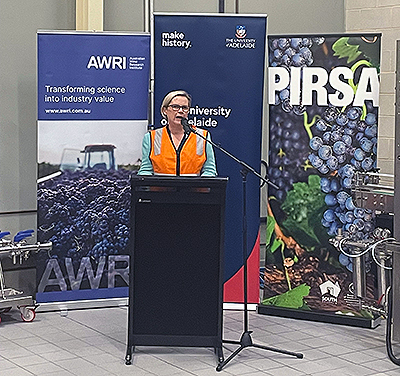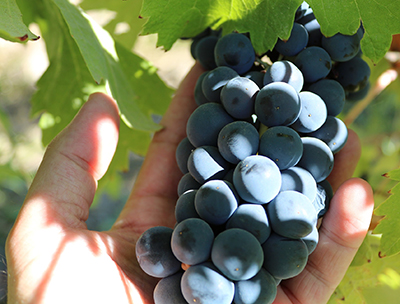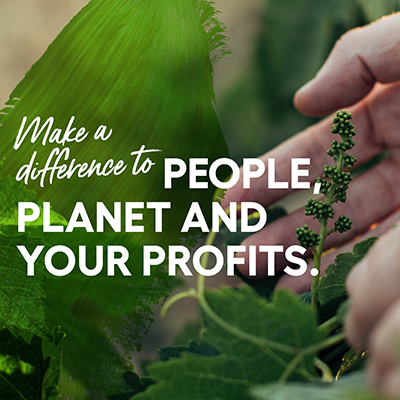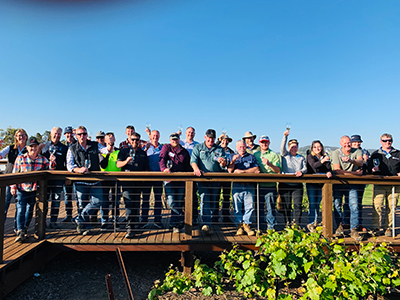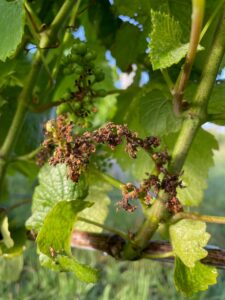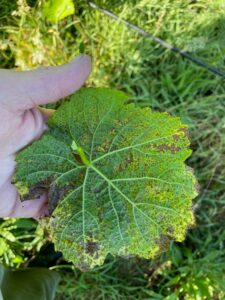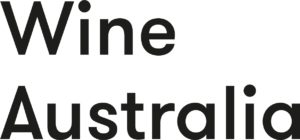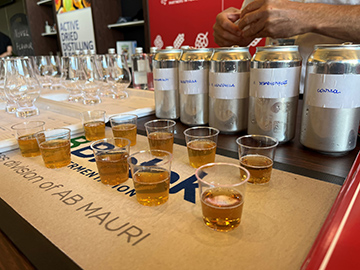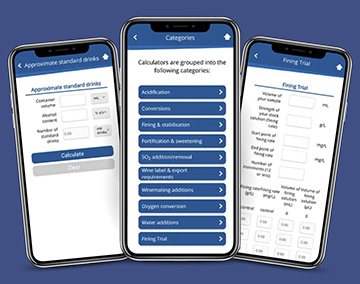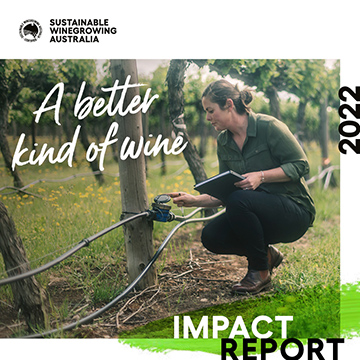The June 2023 issue of Technical Review is now available online.
Read the latest articles on alternative solutions to traditional cold stabilisation in white wines, biocontrol yeasts, updates on plant virus research, use of constructed wetlands to treat winery wastewater and sludge, cover cropping in southern Australia and global trends affecting wine exports.
This issue’s Technical Note article focuses on consumers’ perceptions of smoke-affected wine and what it means for wine producers.
Australian winemakers and grapegrowers who pay the Wine Grapes or Grape Research levies can log in to read abstracts and order the latest non-open access journal articles from the AWRI Library, free of charge. Register a new login or use the forgotten password link to reset your password.
We welcome your feedback on Technical Review and you can reach us at infoservices@awri.com.au.
Below is a snapshot of what’s in this issue.
AWRI Technical Notes
AWRI Publications
- A chronological study on grapevine leafroll-associated virus 2 in Australia [Read full-text online] Viruses
- A novel solution to tartrate instability in white wines [Read abstract online] [Request copy from AWRI Library] Food Chemistry
- Ask the AWRI: Traditional cap management techniques [Read full-text online] Australian & New Zealand Grapegrower & Winemaker
- Chemical basis of ‘stone fruit’ aromas in white wine [Read full-text online] Chemistry in Australia
- Consumer response to wine made from smoke-affected grapes [Read full-text online] OENO one
- Modelling smoke flavour in wine from chemical composition of smoke-exposed grapes and wine [Read full-text online] Australian Journal of Grape and Wine Research
- SO2 and copper tolerance exhibit an evolutionary trade-off in Saccharomyces cerevisiae [Read full-text online] PLoS Genetics
- State-of-the-art plant virus research in Australasia [Read full-text online] Viruses
- The genetic variability of grapevine Pinot gris virus (GPGV) in Australia [Read full-text online] Virology Journal
- The genome assembly of Vitis vinifera cv. Shiraz [Read full-text online] Australian Journal of Grape and Wine Research
- Transient acetaldehyde production by SO2 producing Saccharomyces cerevisiae promotes the survival of Oenococcus oeni during co-fermentation [Read full-text online] OENO one
- Using zeolites to cold stabilize white wines [Read full-text online] Australian Journal of Grape and Wine Research
Oenology
- Influence of cold pre-fermentation maceration on the volatilomic pattern and aroma of white wines [Read full-text online] Foods
- Different SO2 doses and the impact on amino acid and volatile profiles of white wines [Read full-text online] Beverages
- Calcium tartrate instability – a new and increasingly widespread challenge that can be managed by safe and easy-to-apply means. [Request copy from AWRI Library] Wine & Viticulture Journal
- Impact of climate change on the aroma of red wines: a focus on dried fruit aromas [Read full-text online] Infowine – Internet Journal of Viticulture and Enology
- Taylors Wines boasts clear benefits of water filtration system [Request copy from AWRI Library] Australian & New Zealand Grapegrower & Winemaker
- The global trends influencing wine exports [Request copy from AWRI Library] WBM: Australia’s Wine Business Magazine
- Evaluation of the application of Wickerhamomyces anomalus supernatant for the control of relevant spoilage yeasts in wines [Read full-text online] OENO One
- Message in a bottle: An exploratory study on the role of wine-bottle design in capturing consumer attention [Read full-text online] Beverages
- In situ measurement of light transmission into wine bottles and calculation of shelf life [Read full-text online] OENO One
- New online monitoring approaches to describe and understand the kinetics of acetaldehyde concentration during wine alcoholic fermentation: Access to production balances [Read full-text online] Fermentation
- Amphorae in vogue: A pure form of expression in winemaking [Request copy from AWRI Library] Australian & New Zealand Grapegrower & Winemaker
- Crossflow and membrane plate filtration: Their impact on the quality of different red wines under winery-scale conditions [Request copy from AWRI Library] Wine & Viticulture Journal
- Thinking of reducing your use of SO2? Some ideas on how to start the journey this vintage [Request copy from AWRI Library] Wine & Viticulture Journal
- The application of non-thermal technologies for wine processing, preservation, and quality enhancement [Read full-text online] Beverages
Sustainability
- Ask the AWRI: Traditional cap management techniques [Read full-text online] Australian & New Zealand Grapegrower & Winemaker
- Comparing the carbon footprint of conventional and organic vineyards in northern Italy [Read full-text online] Sustainability
- Constructed wetlands for winery wastewater treatment: A review on the technical, environmental and socio-economic benefits [Read abstract online] [Request copy from AWRI Library] Science of the Total Environment
- Recovery of value-added compounds from winery wastewater: A review and bibliometric analysis [Read full-text online] Water
Viticulture
- Cover crop response to increased concentrations of copper in vineyard soils: Implications for copper phytoextraction [Read abstract online] [Request copy from AWRI Library] Chemosphere
- Wind speed, sun exposure and water status alter sunburn susceptibility of grape berries [Read full-text online] Frontiers in Plant Science
- Technologies and innovative methods for precision viticulture: A comprehensive review [Read full-text online] Horticulturae
- Grape price pressures add to growers’ woes: Price fluctuations not consistent across regions [Request copy from AWRI Library] Australian & New Zealand Grapegrower & Winemaker
- Two decades of grape variety trends in Australia’s wine regions [Request copy from AWRI Library] Wine & Viticulture Journal
- Evaluation of foliar applications of urea at three concentrations on grape amino acids composition [Read full-text online] Journal of the Science of Food and Agriculture
- Oenological potential of wines produced from disease-resistant grape cultivars [Read full-text online] Comprehensive Reviews in Food Science and Food Safety
- Evaluation of carbon balance and carbohydrate reserves from forced (Vitis vinifera L.) cv. Tempranillo vines [Read full-text online] Frontiers in Plant Science
- Fungicide resistance: Effective management practices for healthy vines and budgets [Request copy from AWRI Library] Australian & New Zealand Grapegrower & Winemaker
- Growers beware of infected grafted vines [Request copy from AWRI Library] Australian & New Zealand Grapegrower & Winemaker
- Antifungal activity of chili pepper extract with potential for the control of some major pathogens in grapevine [Read full-text online] Pest Management Science
- Scare tactics: Robotic technologies applied to bird scaring [Read full-text online] New Zealand Winegrower
- Cover crops, soil organic carbon and a confluence of co-benefits – A glimpse from under the vines [Request copy from AWRI Library] Wine & Viticulture Journal
- Opportunities and challenges for cover cropping in sustainable agriculture systems in Southern Australia [Read full-text online] Agriculture
- The role of soil temperature in Mediterranean vineyards in a climate change context [Read full-text online] Frontiers in Plant Science
- Adapting wine grape production to climate change through canopy architecture manipulation and irrigation in warm climates [Read full-text online] Frontiers in Plant Science
- Towards grapevine root architectural models to adapt viticulture to drought [Read full-text online] Frontiers in Plant Science
Business
- Problems and opportunities within the wine industry in terms of the COVID-19 pandemic [Read full-text online] Agriculture


